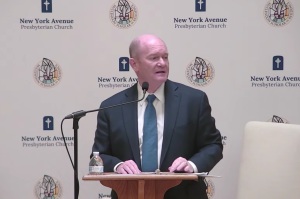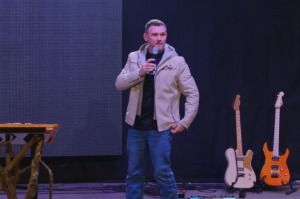Postcard from an old Russian colonial outpost

Alaska offers more than the stereotypical experiences associated with the state’s Last Frontier moniker.
This includes one of the most fascinating chapters in American history: the period when the 49th state was part of Russian America. Not only is this history fascinating, but imperial Russia’s ambitions in the New World is one of the least-known chapters in the collective history of the United States.
Sure, most of us probably know about the 13 Colonies, though even this is increasingly whitewashed and outright canceled by the wokists. Some may even know about New France or the Spanish (and later Mexican) settlements across the Southwest. Far fewer know the czars had outposts in present-day Alaska, California and even Hawaii.
I learned just about everything I was never taught in school during a recent visit to Sitka, which is located along the Inside Passage in southeastern Alaska.

Under the Russians between 1799 and 1867, this town of 8,881 at the last census was called New Archangel and served as the colonial capital until the United States purchased Alaska in 1867. Originally ridiculed as Seward’s Folly — William Seward, secretary of state under Presidents Abraham Lincoln and Andrew Johnson, oversaw the acquisition — it ended up being one of the all-time greatest speculative real estate transactions. The cost? $7.2 million or about 2 cents per acre.
I set out on my own after getting a lay of the land from local guide Bob Purvis during a two-hour walking tour. My first stop was the Sitka History Museum within Harrigan Centennial Hall, a community center-cum-convention space overlooking the harbor.
The museum’s comprehensive collection punches well above its weight by covering everything from indigenous Tlingit Indians and Russian America through Alaskan statehood in 1959. Among the numerous objects displayed are period artifacts, including those associated with the Russian Orthodox church.
While Russia primarily treated Alaska as a commercial enterprise, the state church had a greater impact by propagating the faith once delivered to the Tlingits.

The best example of the church’s lasting witness is the Cathedral of St. Michael the Archangel (Orthodox Church in America), which towers over the quaint downtown. What stands today is an exact re-creation of the 1800s edifice that was destroyed by fire in 1966. The typically Orthodox ornate interior does, however, contain some of the original fabric, including the iconostasis screen separating the nave from the altar in the sanctuary and the bishop’s throne. These were saved from destruction through heroic actions of the faithful.
Directly across the street is the Sitka Lutheran Church (Evangelical Lutheran Church in America) with its hideous architecture reminiscent of a concrete parking garage. Founded in 1840 by Russia’s Swedo-Finnish governor for the Finnish and Swedish laborers employed by the Russian-American Company, this is Alaska’s oldest Protestant church. Also destroyed by the 1966 fire, the modern church’s narthex contains several exhibits and artifacts. Sunday services also utilize the original organ and pulpit.
A short walk away on a small knoll is a reconstructed blockhouse typical of the Russian fortifications that once encircled Sitka. In the adjoining lot at what was the entrance to a chapel for the Tlingits is the grave of Jacob Netsvetov, the first indigenous Alaskan ordained to the Orthodox priesthood and, since 1994, a canonized saint in the Orthodox Church in America. Across the street at the Lutheran cemetery is the final resting place of a princess, the first wife of Prince Maksoutoff (or Maksutov), the czar’s last governor.
On the other side of town is the Russian Bishop’s House. Part of the Sitka National Historical Park, this is a rare example of a surviving Russian colonial building. Used by the Russian Orthodox Church until 1969, the former episcopal palace has been carefully restored by the National Park Service to how it would have looked around 1853.
Back downtown is Castle Hill. What looks like an ordinary park, albeit one with commanding views of the Sitka Channel, is the Baranof Castle State Historic Site. It was here where the American flag was first raised on Oct. 18, 1867. The transfer ceremony, which included a few hundred soldiers from the armies of both countries, occurred on a parade ground in front of Maksoutoff’s official residence.
If you go
I highly recommend a private tour from Jeff Budd. He takes visitors to Russia’s 1799 settlement on the outskirts of Sitka at Starrigavan Bay. Also worth visiting is the Sheldon Jackson Museum, originally part of a Presbyterian residential school.
Stay at the Sitka Hotel on Lincoln Street (main street in all but name). Everything to do and see is within walking distance. Importantly, rooms are clean and well-appointed.
Eat at Ludvig’s Bistro, Beak or Mangiare, the hotel restaurant.
Sitka’s airport is primarily served by Alaska Airlines. Additional seasonal service to and from Seattle is provided by Delta Air Lines.
Follow @dennislennox on Instagram and Twitter.
Dennis Lennox writes about travel, politics and religious affairs. He has been published in the Financial Times, Independent, The Detroit News, Toronto Sun and other publications. Follow @dennislennox on Twitter.



























